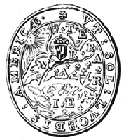|
Runaway slaves themselves were the focus of the second
part of our project, the extraction of advertisements from
newspapers published between 1830 and 1860. The
daily Baltimore Sun, which had one of the widest
circulation in the region, proved to be the most fruitful
source of slave ads, averaging nearly 100 per year.
Each ad was scanned and linked to a comprehensive database.
The database contains information about the owner; the
slave's name, age, and gender; location a slave escaped
from; likely routes the fugitive took; and number of other
slaves accompanying a runaway. Future users of the database
will be able to construct queries about the profile of the
average runaway, the concentration of runaway cases in
various counties of Maryland, the frequency of escape, and
the popularity of certain destinations.
In addition to census and newspaper record stripping, we
built extensive profiles of people who assisted runaway
slaves in their flight. Unfortunately, one of the best
ways to confirm the existence of the Underground Railroad
in Maryland, and the structure of its operation, is by
examining its unsuccessful attempts. We compiled a list of
people convicted of enticing and persuading or aiding and
abetting slaves to run away. We recorded all documents
associated with the case studies, such as the court files,
prison records, and pardon papers. Also searched were
census records, slave schedules, marriage licenses, land
records, and newspapers. Most of the people convicted of
helping slaves were pardoned after issuance of the
Emancipation Proclamation. Case studies such as these
enable one to understand exactly how slaves escaped from
their masters, and the punishments issued if
caught.
All of this research will be used to piece together the
Underground Railroad in Maryland, whether through tracking
the movement of runaway slaves, plotting the positions of
slave holdings, or identifying the runaway slaves
themselves.
|
|











